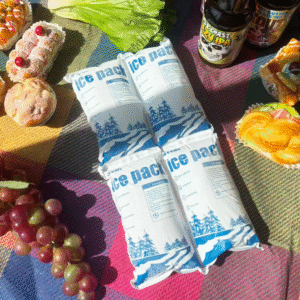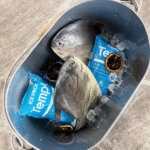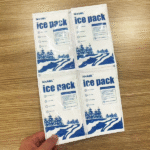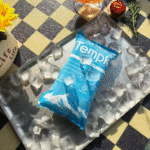Expédition des aliments surgelés, biologics or industrial samples requires a refrigerant that stays cold, stays dry and arrives on time. UN delivered dry ice pack uses solid carbon dioxide frozen at –78.5 °C and delivers 24–72 hours of ultra cold storage without melting. Because dry ice sublimates directly into CO₂ gas, goods stay dry, avoiding the soggy mess typical of water ice. This guide explains how delivered dry ice packs work, how to choose the right size and format, what regulations apply in 2025, and how new hybrid solutions and sustainability efforts are reshaping cold chain logistics. You’ll learn practical tips to keep your cargo safe and your customers happy.
Why dry ice packs deliver ultra cold, mess free refrigeration
How to select and pack the right delivered dry ice pack for your needs
Regulations and safety practices for handling dry ice in 2025
Hybrid alternatives and sustainable innovations shaping the cold chain
Frequently asked questions about delivered dry ice packs
What Is a Delivered Dry Ice Pack and Why Use One?
Dry ice is solid carbon dioxide that sublimes directly into gas, providing long lasting, dry cold ideal for frozen shipments. When dry ice is exposed to temperatures above –78.5 °C, it absorbs heat and turns into CO₂ gas without leaving liquid behind. This process keeps goods frozen for 24–72 hours and avoids water damage. Because dry ice releases cold gas rather than liquid, packages remain clean and intact, which makes delivered dry ice packs perfect for frozen meats, fruit de mer, vaccins et produits biologiques.
How Dry Ice Cooling Works
Dry ice cooling relies on sublimation, a phase change where a material goes directly from solid to gas. Unlike gel packs that freeze around 0 °C and melt over time, dry ice absorbs heat and creates a blanket of cold CO₂ around the payload. The absence of liquid prevents condensation, freezer burn or contamination and allows the pack to maintain ultra low temperatures of –18 °C (0 °F) or lower for one to three days. Because dry ice must be purchased for each shipment, the cost per shipment can be higher than reusable gel packs, but the ability to keep goods frozen is unrivalled.
Advantages Over Gel Packs
Température inférieure: Dry ice keeps shipments as cold as –109.3 °F (–78,5 ° C), making it suitable for ice cream, seafood and vaccines.
Longer Cooling Period: In insulated containers, dry ice lasts longer than gel packs, making it ideal for long distance or warm climate deliveries.
Pas de résidu d'eau: Dry ice sublimes without melting, preventing soggy packaging and product damage.
Precise Cooling: When combined with insulating materials, dry ice can maintain temperatures below –18 °C consistently, ensuring product integrity.
Désavantage
Special Handling Required: Le froid extrême peut provoquer des engelures, and CO₂ gas can displace oxygen; proper ventilation and protective gear are essential.
Conformité réglementaire: Dry ice shipments require labeling («Dioxyde de carbone, Solide, UN1845”) and weight declarations and must follow air transport limits (200 kg par forfait).
Single Use: The dry ice itself sublimates fully and cannot be reused; some sheet-style packs allow limited reuse, but always check manufacturer instructions.
Choosing the Right Delivered Dry Ice Pack for Your Shipment
Selecting the correct size and format ensures cargo stays frozen without wasting product or budget. Start with 5–10 lb of dry ice per 24 hours of transit and adjust based on insulation quality and ambient temperature. The choice of dry ice pack depends on shipping duration, product sensitivity and package size.
Types of Dry Ice Packs and Their Uses
| Format | Taux de sublimation & Tenir le temps | Avantage pratique |
| Slabs/Bricks (2–10 lb) | Slow sublimation; endure 24–72 hours | Ideal for long routes and ultra cold shipments; minimal handling |
| Pellet Bags | Fast pull down; sublime rapidement | Useful for quickly lowering product temperature or pre conditioning shippers |
| Scored Sheets/Mini Slabs | Flexible placement around irregular loads | Fit around odd shaped items; support mixed cargo and small parcels |
| Hydrate Dry Ice Sheets | Rehydrate and freeze to form ice; réutilisable | Good for home deliveries where some reusability is desired |
Sizing and Packaging Tips
Calculate Weight Properly: Use 5–10 lb (2.3–4,5 kg) de glace sèche par 24 hours for standard insulated boxes; increase the amount for longer transit or high ambient temperatures. For a 48 hour shipment, Hazmat University suggests 10–15 lb.
Pre condition Your Payload: Freeze goods at the required temperature for at least 24 hours before packing to improve hold time.
Placement Matters: Position the dry ice above or around the product so cold CO₂ gas sinks and blankets the cargo.
Insulate Well: Use rigid foam or vacuum panels with corrugated outer boxes to reduce sublimation and improve safety. Évitez les conteneurs scellés; vent holes allow gas to escape, empêcher l'accumulation de pression.
Label Clearly: Mark packages with “Dry Ice” or “Carbon Dioxide, Solide,» inclut l'ONU 1845, net weight and shipper/recipient information. Use a Class 9 hazard label in compliance with IATA and DOT regulations.
Quick Scenario Tips
Overnight Delivery of Frozen Meals: Use pellet bags for rapid cooling and small slabs around product edges; 5 kg (2.3 kg) may suffice for 12 hour transit.
48 Hour Vaccine Shipment: Placer un 15 lb slab above the vials with insulated dividers; monitor with an IoT data logger to track temperature variations.
Irregularly Shaped Seafood Box: Wrap scored sheets around corners and place a small slab on top; use waterproof liners to separate food from dry ice.
Cas du monde réel: A seafood company reduced thaw losses from 7 % à 1.5 % by switching to bulk dry ice packs and adding vented lids and liners on two day routes. This simple change improved product quality and customer satisfaction.
Regulations and Safety Practices for Delivered Dry Ice Packs in 2025
Safety is non negotiable when shipping or receiving dry ice packs. Dry ice is regulated under UN 1845 and considered a hazardous material. Compliance protects both people and goods.
Règlements clés
Limites de poids: Association internationale des transports aériens (Iata) and DOT rules limit dry ice to 200 kg par forfait. FedEx’s job aid confirms this maximum and reminds shippers not to pack dry ice in sealed containers.
Étiquetage approprié: Packages must display “Dry Ice” or “Carbon Dioxide, Solide," l'ONU 1845 nombre, et le poids net. The Class 9 hazard label must measure at least 100 mm × 100 mm.
Ventilation: L'emballage doit permettre à Co₂ Gas de s'échapper; never use sealed jerricans or plastic bags. Hazmat University notes that venting prevents pressure buildup and package rupture.
Documentation: When dry ice is used to cool non dangerous goods, an air waybill note suffices. For dangerous goods, a shipper’s declaration is required.
Carrier Restrictions: USPS allows only 5 kg (2.27 kg) de glace carbonique par colis pour les expéditions nationales, whereas commercial carriers like FedEx or UPS allow larger quantities.
Safe Handling Practices
| Danger | Risque | Safe Practice |
| Gelure | Direct contact with dry ice freezes skin within seconds | Portez des gants isolés, long sleeves and eye protection when handling dry ice |
| Asphyxation | CO₂ gas displaces oxygen in confined spaces | Handle and store dry ice in well ventilated areas; avoid closed vehicles |
| Explosion | Sealed containers can burst as CO₂ gas builds pressure | Use vented coolers and avoid screw top jars or airtight boxes |
| Regulatory Violations | Improper labeling or excess weight can cause fines and shipment delays | Suivez IATA PI 954 et 49 CFR 173.217 instructions; display UN 1845 et poids net |
Storage and Disposal
Stockage: Keep dry ice in ventilated coolers or insulated boxes. Do not store in refrigerators or cold rooms where CO₂ can accumulate.
Élimination: Allow unused dry ice to sublimate in an open, well ventilated area. Do not dump it into sinks or trash cans, which could crack from the extreme cold.
Home Deliveries: For residential recipients, include clear disposal instructions and a warning not to touch the ice. Provide safety gloves if possible.
Packaging Strategies and Hybrid Solutions for Enhanced Performance
Proper packaging ensures that your delivered dry ice pack works efficiently. By combining insulation, smart monitoring and hybrid refrigerants, you can reduce the amount of dry ice needed and cut costs.
Insulation and Monitoring
Conteneurs isolés: Use high R insulation materials such as expanded polypropylene (PPE), panneaux isolés sous vide (VIP) or polyurethane foam to reduce sublimation. Upgrading insulation can cut required dry ice mass by 10–25 %.
IoT Enabled Sensors: Data loggers track temperature, humidité et localisation en temps réel. Tempk notes that smarter shippers with vented lids, re icing windows and data logger pockets are improving safety and quality assurance. Akuratemp’s Smart Medical Courier Tote provides 24/7 monitoring and improves chain of custody compliance.
Hybrid Refrigeration: Combine dry ice with Matériaux à changement de phase (PCMS) or gel packs to maintain narrow temperature bands and reduce the amount of dry ice needed. ThermoSafe reports that mixing PCMs or improved insulation is a common strategy in 2025 to stretch each pound of dry ice further.
Alternatives and When to Use Them
While dry ice remains indispensable for ultra cold shipments, alternatives are gaining traction:
Gel Packs and PCM Packs: These refrigerants hold 2–8 °C ranges and are ideal for chilled goods. Ils sont réutilisables, non toxic and require no special labeling. Gel packs are cost effective for local deliveries, while dry ice is reserved for frozen goods.
Mechanical Refrigeration: Active containers powered by batteries maintain frozen temperatures without refrigerants. ThermoSafe notes that active solutions are used in pharma air freight but come at higher cost.
Dry Ice Alternatives for Frozen Shipments: Akuratemp’s Frozen Domestic Smart Parcel Shippers maintain temperatures below –20 °C without dry ice, eliminating hazardous labeling and regulatory hassles. These systems reduce delays associated with dry ice on aircraft and lower operational costs.
Decision Tips
Durée de l'expédition: Use dry ice for long or very cold routes (>24 heures) and gel or PCM packs for chilled goods or same day deliveries.
Type de produit: Frozen meats, seafood and biologics require ultra cold conditions; gel packs suffice for fresh produce and prepared meals.
Customer Handling: If recipients are unfamiliar with dry ice or cannot dispose of it safely, opt for gel packs or dry ice alternatives to avoid safety incidents.
Impact environnemental: Gel packs can be reused or recycled more easily, whereas dry ice sublimation releases CO₂. Some companies are exploring bio based CO₂ capture for dry ice production.
Actual example: Akuratemp highlights a growing shift away from dry ice at industry conferences, with high demand for last mile solutions and reusable methods. Attendees showed increased interest in fleet monitoring and sustainable packaging, signaling a market trend toward hybrid refrigeration.
2025 Trends and Market Insights for Delivered Dry Ice Packs
Aperçu de la tendance
The cold chain industry is evolving rapidly. Dans 2025, the adoption of dry ice packs expanded alongside e groceries and life science shipping. Supply stabilised after pandemic disruptions, but innovations in insulation and hybrid refrigeration reduced required dry ice mass, lowering costs by double digit percentages. Automation and IoT data loggers make re icing predictable and auditable, while sustainability pushes CO₂ recovery and bio based capture. Regional manufacturing increases availability of pellets and slabs, further lowering costs.
Latest Advances at a Glance
Smarter Shippers: Packages now feature vented lids, re ice windows and pockets for data loggers, improving safety and allowing mid journey dry ice replenishment.
Dynamic Routing & Digital Tracking: Increased weekend hand offs and GPS tracking reduce delays but require buffer planning.
Sustainability Initiatives: CO₂ recovery at production plants and bio based capture methods are gaining traction. Buyers request proof of greener sources.
Regionalisation: Local production reduces transport distances and improves pellet/slab availability.
Solutions hybrides: Combining PCMs, gel packs and better insulation reduces dry ice mass and regulatory burdens.
Insistance au marché
Supply–Demand Imbalance: The dry ice market is under strain. Consumption has climbed about 5 % par année, while CO₂ supply has grown only 0.5 % annuellement, causing shortages and price volatility. Spot prices can surge 300 % during supply crunches.
Market Growth: Despite challenges, the global dry ice market was NOUS $1.54 milliards en 2024 et devrait atteindre NOUS $2.73 milliards 2032, a compound annual growth rate of 7.4 %. Demand is driven by food shipping, biologique, vaccines and industrial processes.
Industry Responses: Manufacturers are building local production hubs and exploring on site CO₂ capture to reduce transport losses. Shippers are mixing dry ice with PCMs and improving insulation to stretch each pound further.
Pressions sur la durabilité: Customers are asking for low carbon dry ice from bio based sources. Bioethanol plants that capture CO₂ during fermentation are emerging as greener suppliers. In the UK, bioethanol producer Ensus supplies 30–60 % of domestic food grade CO₂, but trade pressures threaten the viability of such facilities. The incident underscores the fragility of supply chains and the need for diversified, sustainable CO₂ sources.
Sector Specific Trends: Food shippers are using thinner dry ice slices and pellets for rapid cooling and investing in better insulated boxes. Biologics and gene therapy shipments employ barrier technologies and real time monitoring to slow CO₂ gas release.
Shift Away from Dry Ice: Industry conferences report high demand for last mile delivery solutions and reusable methods, signaling a trend toward alternatives that reduce regulatory burdens and waste.
Market Forecast Table
| Métrique | 2024 Valeur | 2032 Projection | Conséquences |
| Global Dry Ice Market Size | NOUS $1.54 milliard | NOUS $2.73 milliard | Growing demand from food shipping, biologics and industrial sectors |
| Consumption Growth | ≈5 % annuellement | - | Demand outpaces CO₂ supply, contributing to shortages |
| CO₂ Supply Growth | ≈0.5 % annuellement | - | Limited supply increases price volatility and spurs search for alternatives |
| Weight Limit per Package (Air) | 200 kg | - | Strict regulation drives innovation in hybrid cooling and packaging |
Questions fréquemment posées (FAQ)
How long will a delivered dry ice pack keep my product frozen?
Most delivered dry ice packs keep goods frozen for 24–72 heures depending on the amount of ice, insulation quality and ambient temperature. Starting with 12–20 lb can maintain –20 °C for a 48 hour trip. Always test your route and adjust the quantity.
Are dry ice packs safe to use at home?
Oui, if you follow safety guidelines. Portez des gants isolés, keep dry ice away from children and pets, and allow the gas to vent in a well ventilated area. Do not store dry ice in sealed containers.
What’s the difference between dry ice packs and gel packs?
Dry ice provides ultra cold temperatures and leaves no water residue, Le rendre idéal pour les produits gelés. Gel packs are reusable and non toxic but only keep goods chilled (2–8 ° C).
How much dry ice can I ship on a passenger aircraft in 2025?
IATA and DOT regulations allow jusqu'à 200 kg de glace sèche par colis. Always label packages with “Carbon Dioxide, Solide,"Et 1845 et poids net, and ensure containers are vented.
What are sustainable alternatives to dry ice?
Hybrid solutions combine dry ice with phase change materials, gel packs or active refrigeration. Innovations like Akuratemp’s Frozen Domestic Smart Parcel Shipper maintain frozen temperatures below –20 °C without dry ice. Bio based CO₂ recovery from bioethanol plants is also emerging as a greener source.
Puis-je réutiliser les packs de glace sec?
Dry ice itself sublimates and cannot be reused. Cependant, hydrate dry ice sheets and gel ice combinations can sometimes be rehydrated or refrozen. Always follow the manufacturer’s instructions.
Summary and Key Takeaways
Delivered dry ice packs provide long lasting, ultra cold and mess free refrigeration by sublimating solid CO₂ into gas. Choosing the right format (dalles, pellets or sheets), calculating adequate weight and using proper insulation ensures shipments remain frozen. Safety and regulatory compliance are essential: packages must be vented, labeled with UN 1845 and limited to 200 kg per air shipment. Hybrid solutions like gel packs, PCMs and active containers reduce dry ice mass and environmental impact, while IoT monitoring improves quality control. Market trends reveal growing demand for frozen delivery, supply constraints and a pivot toward sustainable CO₂ sources. Staying informed and applying these best practices will keep your cold chain operations safe, compliant and cost efficient.
Actionable Recommendations
Assess Your Needs: Determine product temperature requirements, transit duration and route conditions. For overnight deliveries of chilled goods, choose reusable gel packs; for multi day frozen shipments, use dry ice slabs or hybrid combinations.
Calculate Proper Weight: Start with 5–10 lb of dry ice per 24 hours and adjust for insulation quality and outside temperatures.
Upgrade Insulation: Invest in high R boxes or VIP panels to reduce sublimation and cut dry ice consumption by up to 25 %.
Follow Safety Protocols: Train employees in IATA PI 954 exigences, label packages correctly, wear protective gear and provide disposal instructions.
Adopt Hybrid Solutions: Explore PCMs, gel packs or active refrigeration to reduce dry ice usage and meet sustainability goals.
Monitor With IoT: Use data loggers or smart courier totes to track temperature and location in real time.
Restez informé: Keep abreast of market trends, CO₂ supply issues and new regulations. Partner with suppliers committed to bio based CO₂ recovery and sustainability initiatives.
À propos du tempk
Rotation is a leader in cold chain packaging and refrigerants. Notre R&D centre develops eco friendly products, including reusable insulation and affordable dry ice pack sheets. We help clients design, test and validate shipping solutions that balance safety, compliance and cost. Whether you need lane testing, SOP development or staff training, Tempk’s experts provide tools and guidance to optimise your cold chain operations.
Appel à l'action: Ready to reduce spoilage and shipping costs? Contact Tempk for a free consultation or try our dry ice pack calculator. We’ll help you select the most cost effective and sustainable solution for your frozen goods.
























